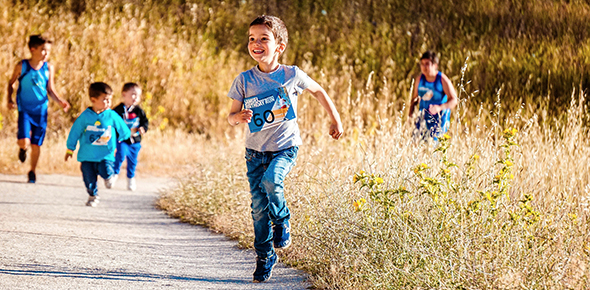Foot Care for Runners: Preventing Injuries and Enhancing Performance

It is no secret that running takes a toll on your feet. With each stride, your feet absorb the weight of your body pounding down onto the pavement and propel you forward step by step until you reach the finish line. Whether you are a novice runner or a seasoned marathoner, every runner must take steps to care for their feet. Not only will caring for your feet help prevent injuries, but it just might help you run a new PR!
Wear the Right Shoes
When it comes to running shoes, there is no specific brand or shoe that is the best. Ultimately, the best shoe for you depends on your specific foot type and the running you do. For example, some running shoes are better for people with flat feet, while others are for people with high arches. Before buying a pair of running shoes, research to make sure the shoes are right for you. Better yet, visit a running shoe store and get professionally fitted to ensure you are in the best shoes for your feet.
Always try on running shoes before purchasing to make sure they are not too tight, as this can damage your toenails and not too loose, as this will allow your foot to slide around in the shoe and develop blisters. It is also important to replace your running shoes regularly because worn-out shoes lose their support and cushion, which can lead to injuries. Replacing your running shoes after running 300-500 miles in them is recommended.
Choose the Right Socks
Although the type of socks you wear while running may seem insignificant, wearing the right socks is essential. Good running socks are made of moisture-wicking material that draws sweat away from the skin to keep your feet dry. Drier feet mean fewer blisters since moisture makes the skin softer and more prone to blisters. Also, good moisture-wicking running socks reduce the risk of developing fungal infections, such as athlete’s foot, since fungus thrives in warm, moist environments.
Trim Your Toenails Regularly
Runners are at an increased risk of developing ingrown toenails, losing a toenail, or developing the aptly named runner’s toe, in which the toenails turn black due to blood collecting under the nail. These injuries can be caused by the repetitive motion of the toenail slamming into the front of the shoe when running. To lessen the chance of injury to the toenail, trim your toenails regularly and cut them straight across.
Change Up the Surface You Run On
We have already established that running puts ample stress on your feet. The surface you run on can either add to or relieve some of this stress. For example, running on hard surfaces, such as concrete sidewalks, can lead to shin splints or Achilles tendonitis from your feet, repetitively striking the hard surface. Run on softer surfaces such as a synthetic track, grass, dirt or gravel trails, or a treadmill if possible.
Warm-Up Before and Cooldown After Running
Warming up before a run increases blood flow to your muscles, elevates your body’s temperature, and loosens up your muscles and joints — all of which help prevent injury. Some ways to warm up your feet before a run include:
- Walking: A 5-10 minute walk before your run can help loosen your feet and ankles.
- Calf Raises and Drops: Stand on a step with your heels hanging off the edge. Rise on your toes and then slowly lower so your heels drop below the level of the step.
- Toe and Heel Walking: Start by walking on the balls of your feet, then switch to walking on just your heels.
- Ball Roll: In a seated position, place a ball, like a tennis or golf ball, under your foot. Roll the ball back and forth on the sole of your foot from the toe to the heel.
- Towel Scrunch: Sit in a chair with your feet flat on the floor with a towel underneath. While keeping your heels on the floor, use your toes to scrunch the towel towards you.
After running, a cooldown helps your body return to its normal state. Similar to your pre-run warm-up, a cooldown should include walking and stretching. Cooling down can help prevent muscle soreness and promote recovery.
Take It Slow
Instead of embarking on a strenuous training plan, it is best to take it slow and gradually build your mileage. Running more than your body can handle puts you at risk of injury. Especially if you are new to running or have been taking a break from the sport, you should start by running shorter distances and gradually add on more distance every week.
See a Doctor If You Face an Injury
Although it may be tempting to push through an injury, it is best to rest and let your injury fully heal to prevent making the injury worse. See a podiatrist immediately if you experience foot pain that does not go away in a few days or if your foot injury seems severe. The sooner you see a doctor, the sooner you can heal and return to running.
If you are experiencing foot problems, contact the physicians at Family Footcare today to book an appointment.
…
Websites used:
https://midamericaortho.com/blog/253-tips-for-avoiding-foot-ankle-injuries-while-running
https://www.austinfootandankle.com/blog/simple-ways-that-runners-can-protect-their-feet.cfm
https://optimafootandankle.com/5-tips-for-runners-to-prevent-black-toenails/
